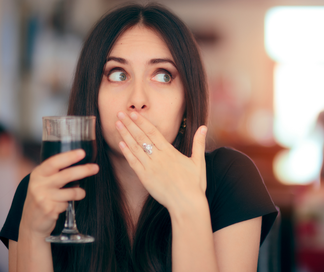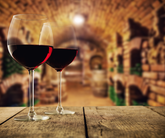When more isn't really better... Alcohol is the difference between fruit juice and wine. In a Ferment-On-Premise operation, the customer makes their wine by adding a specific yeast to their juice. The yeast essentially "eats" the sugars in the juice and leaves alcohol behind. Basically, the more sugar there is in the juice, the higher the alcohol. The amount of alcohol in wine will determine the wine's texture, and the bitterness and sweetness we perceive when drinking it. The alcohol gives us a "mouthfeel" and provides some structure and body to the wine. It also acts like a natural preservative and allows wine to age without spoiling. Commercial wines can be easily found between 8 - 16% ABV (alcohol by volume). Depending on the style of the wine, the grapes used and the winemaker's decisions in making the wine, that ABV can vary quite a bit. Wine kits are designed to work out with the same results, every time. These come straight from the manufacturer, already to be made. The juice concentrate has been tested, balanced for flavour and profile, and they know what alcohol percentage you should be getting, based on their instructions. Although it can be done, I would not recommend adjusting the kits to make more alcohol. Country fruit wines can be trickier. Depending on your winemaking abilities and methods used, you can control the alcohol percentage quite a bit. Amount of fruit used. Quality and ripeness of your fruit. Selecting a specific yeast. Testing for sugars in your fruit. Determining what type of sugar to use. Adding extra sugar.... a little or a lot... The sugar content, or Brix, of wine is determined by the ripeness of your fruit, and in the case of country fruit wines, the amount of additional sugar or honey when starting your batch of wine. Fruit that has been given the chance to fully ripen will have a higher sugar content. Fruit grown in warmer climates, or when we have a really hot/dry summer, will also have a higher sugar content. Most country fruit wines are made with fruit that does not have a high enough natural sugar content, so adding extra sugar is needed to push up that alcohol content to where it is desired. We want to make a country fruit wine that is drinkable - one with good flavour and is nicely balanced. Cranking up that alcohol level can produce a "hot" element, burning the back of your throat and warming your insides all the way down. A hot wine can stunt the delicate fruit flavours, even giving them a "baked" or "cooked" taste. Sometimes all you can taste is the alcohol and hardly any fruit flavour. When making a country fruit wine, ask yourself a few questions:
In the end, the customers who come into our shop have the ability to customize their wine. Ask questions! We want to make sure you are happy with your finished product.
0 Comments
Whether it's store bought or homemade, |
Create your own vintage!
|
Holidays & Sundays: Closed
Mondays: Closed Tuesday: 10am - 5pm Wednesday: 10am - 5pm Thursday: 10am - 5pm Friday: 10am - 5pm Saturdays: 10am - 5pm |


 RSS Feed
RSS Feed